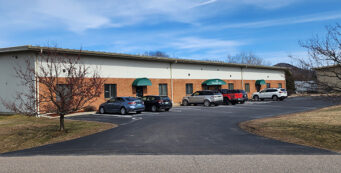The Tenant Side of Commercial Leases: Special Risks, Special Attention
No matter which business sector it serves, the commercial real estate lease is a detailed, binding contract created to define the terms of occupancy. Yet, beneath this definition lurks the second great purpose of the document: commercial leases are also designed to offload as much risk as possible from the landlord and onto the tenant. It’s for this reason that caution must be undertaken by prospective tenants and their brokers. Qualified, experienced legal representation is an absolute must when negotiating commercial leases. This article will barely scratch the surface by looking at some common issues and risks in the details of commercial leases.
Gross vs. Net Leases
Roughly speaking, the two biggest families of commercial lease types are gross leases and net leases. While both represent big risks to tenants, gross leases offer the greater chance of the lease language obscuring hidden pitfalls. This is because net leases outright leave the tenant with responsibility to pay property expenses beyond rent (taxes, insurance, maintenance) almost as if the tenant were the owner of the property. Gross leases, on the other hand, lay out tenant expense beyond rent in details that need attention right down to the units of measure being used and the calendar years being referenced. Getting the right “fit” with the details of a gross lease is a serious undertaking that depends on meticulous attention to those details.
What’s at Stake? Way More Than Rent
A commercial lease can be dangerous because it can easily contain the seeds of destruction for a tenant. From a tenant’s standpoint, the proposed mechanisms and rhythms of a commercial renter’s term of occupancy might be easily imagined and sketched, but when they make it to paper, it’s a different story entirely. This is because the commercial landlord is guaranteed to be concerned with contingencies and eventualities, largely invisible to the tenant at negotiation time, that add up to produce that landlord’s total costs of ownership of the project or property. The lease is the number one tool landlords use to protect themselves against these costs.
Total costs, whether or not they are related to the activities of a particular tenant, are commonly assigned by landlords to all tenants in a property, using a wide variety of mechanisms and formulas that, to the unfamiliar or unprepared, can shackle a tenant with unexpected and burdensome expenses down the road.
Pro Rata: Dividing the Whole Building Among Tenants
Pro rata shares of expense categories are an overwhelmingly common mechanism for negotiating and determining costs borne by a single tenant in a multi-tenant space. The Latin term simply means “proportion,” and space consumed against the whole building is used to determine dollar obligations of tenants. If a tenant is signing a gross lease for 35% of the “usable space” in a project, then there is a rough expectation that the landlord will be using that 35% as a factor in calculating expenses charged to that tenant.
It’s the question “35% of what, exactly?” that offers a glimpse into the dangers. “Usable space” can be counted up a variety of ways, and finding out exactly how the term is defined can mean many dollars of difference to the bottom line. For example: does the useable space referenced in an office lease include or exclude structural columns or entry/exit ways? What about elevators, ductwork, or stairwells? Because each property and each landlord has a differing answer as to what is “usable” vs. “rentable”, the tenant risks paying for space they don’t actually occupy.
Common Areas, Loss Factors, Load Factors
Parts of a building shared with all tenants are defined as common areas. Common areas can include elevators, hallways, lobbies, parking lots, and other non-private areas of the property. They require maintenance, and landlords under gross leases usually will not bear those costs themselves.
The way a landlord charges a tenant for the maintenance of this non-private space is not usually in rent but in an adjustment calculation against the space provided. The landlord often does this one of two ways. Either the tenant will pay for the space advertised but have that space reduced (called a loss factor) or the tenant will get all the space advertised but will pay more per square foot (called a load factor).
The method chosen is influenced primarily by reconfiguration options present in the space. If the space is retail and is subdivided permanently, the landlord is likely to use the “load” method to cover the common area costs, adding a cost per square foot. Alternatively, when the space is new construction the tendency will be for the landlord to use the “loss” method, delivering less space.
Depending on the method used, a tenant can end up with significantly less space than expected, or conversely, can end up paying significantly higher cost per-square-foot than is advertised. This is where an experienced broker earns their keep, by anticipating the final outcome – real space occupied and real dollars paid – and guiding a tenant through the ways to get there. A broker will raise the issues early and learn the specific calculations put down by the landlord, do their own measurements, and compare against what’s being offered.
Your Mission: Find All the Risk
Common-area calculations are only one of a set of concerns where advertised per-square-foot rent and the lived reality on the ground can be significantly different. Base year calculations, escalation clauses, measurements of floor space that don’t resemble reality: all of these and much more can add up to giant risks tenants and their brokers must identify, specify, and negotiate early in the process. After the lease is signed is the wrong – and most expensive – time to learn about these risks.








